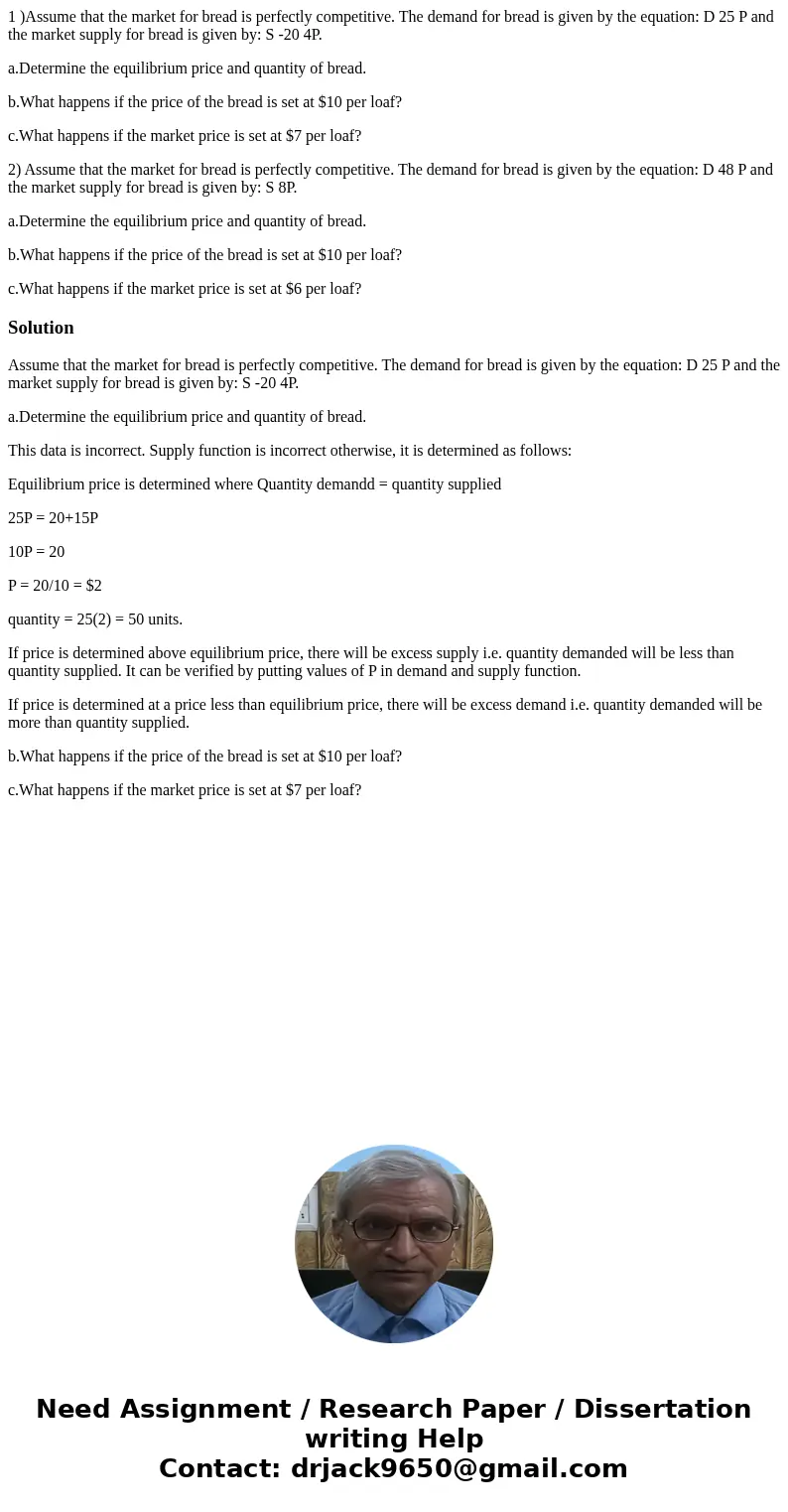1 Assume that the market for bread is perfectly competitive
1 )Assume that the market for bread is perfectly competitive. The demand for bread is given by the equation: D 25 P and the market supply for bread is given by: S -20 4P.
a.Determine the equilibrium price and quantity of bread.
b.What happens if the price of the bread is set at $10 per loaf?
c.What happens if the market price is set at $7 per loaf?
2) Assume that the market for bread is perfectly competitive. The demand for bread is given by the equation: D 48 P and the market supply for bread is given by: S 8P.
a.Determine the equilibrium price and quantity of bread.
b.What happens if the price of the bread is set at $10 per loaf?
c.What happens if the market price is set at $6 per loaf?
Solution
Assume that the market for bread is perfectly competitive. The demand for bread is given by the equation: D 25 P and the market supply for bread is given by: S -20 4P.
a.Determine the equilibrium price and quantity of bread.
This data is incorrect. Supply function is incorrect otherwise, it is determined as follows:
Equilibrium price is determined where Quantity demandd = quantity supplied
25P = 20+15P
10P = 20
P = 20/10 = $2
quantity = 25(2) = 50 units.
If price is determined above equilibrium price, there will be excess supply i.e. quantity demanded will be less than quantity supplied. It can be verified by putting values of P in demand and supply function.
If price is determined at a price less than equilibrium price, there will be excess demand i.e. quantity demanded will be more than quantity supplied.
b.What happens if the price of the bread is set at $10 per loaf?
c.What happens if the market price is set at $7 per loaf?

 Homework Sourse
Homework Sourse